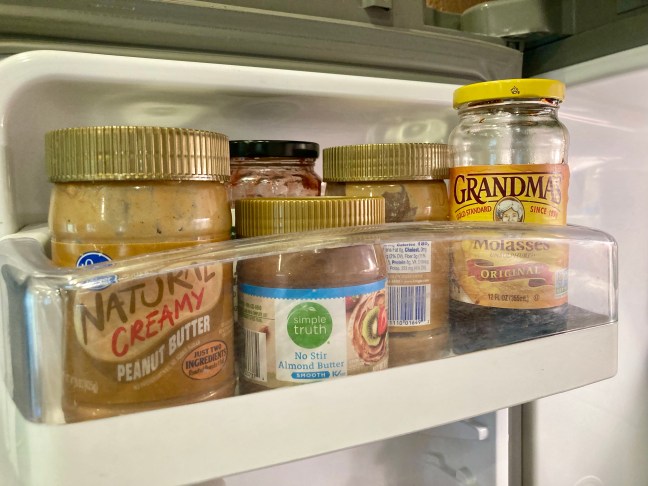This Almond Orange Streusel Coffee Cake features the most delicious, crunchy, nutty streusel. It balances beautifully with the hints of orange throughout the cake.
Well, hello there! It’s been awhile since I’ve shared any new recipes on the site, but I’m back in blogging business because I’ve just made a recipe that’s TOTALLY worth putting out into the universe: Almond Orange Streusel Coffee Cake!
A little anecdote about the making of this delicious cake: My neighbor Renee, who is a good friend, just spent a month visiting her daughter in London. When Renee is gone, it’s almost like having my own mother out of town–she’s such a dear, caring friend I look to as a mentor-slash-mother-figure. So when she returned (and then I myself finally got back into town after the Today’s Dietitian Symposium in Savannah, Georgia), I really wanted to catch up.
Normally, the two of us would go for a walk around our neighborhood, but let’s be real, it’s 100 freaking degrees out in Mesa, AZ, so that’s pretty much off the table until November. Instead, I decided to whip up a yummy coffee cake so we could chat and nibble at the same time.
Funny enough, this recipe didn’t come from any favorite blog. Rather, it’s a riff on an ancient recipe from Great American Home Baking, one of those ’90s subscription recipe books. Much like the Columbia Record Company of bygone days, this cookbook was assembled over time vial mail with individual recipe cards. I remember baking from it back in my junior high years (including a very memorable accident where I forgot to bake the crust in a Baked Alaska pie). Anyway, though the cookbook was my mom’s, I somehow ended up with it. Believe it or not, I continue to use it, cheesy ’90s photos and all!
Even in all the years of use, I had never made this Almond Orange Streusel Cake, but I’m so glad I did. It was the perfect Sunday afternoon company kind of treat. It’s got the most perfect almondy crunch on top and spread throughout the cake, and the orange juice and zest adds a nice complexity of flavor and moist texture. Give it a try!
Almond Orange Streusel Coffee Cake
Ingredients
For the streusel
- 1 c. packed brown sugar
- 1 c. slivered almonds, broken into smaller pieces
- 1/4 c. all-purpose flour
- 3 Tbsp. butter, melted
- 2 tsp. orange zest
For the cake
- 1/2 c. butter, softened
- 1/2 c. white sugar
- 3 large eggs
- 2 tsp. orange zest
- 1/2 tsp. vanilla extract
- 2 c. all-purpose flour
- 1 tsp. baking powder
- 1 tsp. baking soda
- 3/4 tsp. cinnamon
- 1/2 tsp. salt
- 2/3 c. orange juice
For the glaze
- 3/4 c. powdered sugar
- 1 Tbsp. orange juice
Instructions
Make the streusel
- In a medium bowl, mix together brown sugar, crushed slivered almonds, and flour. Add melted butter and orange zest and stir until a crumbly texture forms.
Make the cake
- Preheat the oven to 350 degrees and grease a 9- or 10-inch Bundt pan.
- In a large bowl, beat together the butter and sugar with a hand-held mixer until fluffy. Add the eggs one at a time and beat until combined. Mix in orange zest and vanilla extract.
- Add the flour, baking powder, baking soda, cinnamon, and salt and mix well. Pour in the orange juice and beat until just combined.
- Spread half the streusel mixture evenly in the bottom of the Bundt pan. Cover with half the batter. Sprinkle on the remaining half of the streusel batter and spoon on the remaining half of the cake batter.
- Bake in the preheated oven for about 32-35 minutes. Let cool completely before turning out onto a cake plate.
Make the glaze
- In a small bowl, combine powdered sugar and orange juice. Drizzle over the finished cake.



































